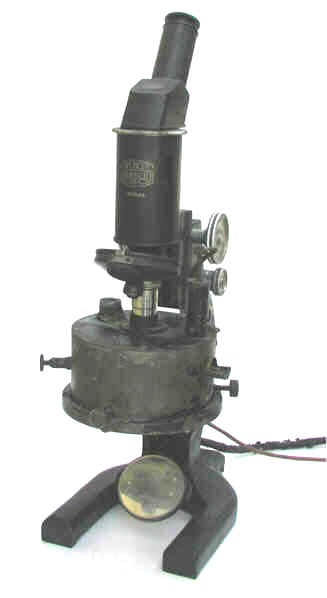Lindemann/Torsion Electrometers
Lindemann Electrometers
Paul Frame, Oak Ridge Associated Universities
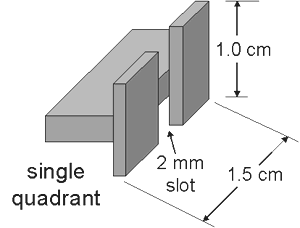 Developed by Frederick Lindemann (Phil. Mag. 47: 577; 1924) for use with the photoelectric cells employed to measure the light from stars. It soon became a popular alternative to the standard quadrant electrometer as a means to measure current from ion chambers. Its virtues include its small size, relative ease of use, and the fact that it can operate in any orientation.
Developed by Frederick Lindemann (Phil. Mag. 47: 577; 1924) for use with the photoelectric cells employed to measure the light from stars. It soon became a popular alternative to the standard quadrant electrometer as a means to measure current from ion chambers. Its virtues include its small size, relative ease of use, and the fact that it can operate in any orientation.
The Lindemann electrometer is essentially a quadrant electrometer. Each quadrant consists of a 1 x 1.5 cm flat plate with a 2 mm slot cut across it.
The movable component of the electrometer consists of a 1 cm long metal-coated glass fiber attached in the middle to a taut torsion fiber (a 1.4 cm long metal coated quartz fiber).
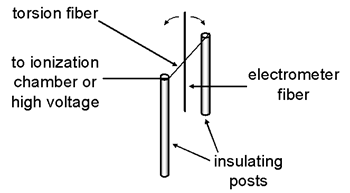
Two of the quadrants are mounted in the same plane on one side of the torsion fiber while the other two are mounted in the same plane on the other side of the fiber and needle. The electrical connections are the same as those of any quadrant electrometer but the applied potential is less (i.e., under 100 V).
When the fiber swings, one end moves into the slot cut in one quadrant while the other end moves into the slot of the diagonally opposite quadrant.
 The entire apparatus is housed inside a cylindrical aluminum or brass case. A circular glass window is located on each end of the case—one window allows light in and the other permits observation of the needle with a microscope. The voltage sensitivity, i.e., the fiber’s movement per unit voltage, is about 0.76 mm per volt. When the scale as viewed through the microscope, this translates to about 500 divisions per volt. The Lindemann electrometer is also capable of measuring currents in the 10-10 to 10-14 amperes.
The entire apparatus is housed inside a cylindrical aluminum or brass case. A circular glass window is located on each end of the case—one window allows light in and the other permits observation of the needle with a microscope. The voltage sensitivity, i.e., the fiber’s movement per unit voltage, is about 0.76 mm per volt. When the scale as viewed through the microscope, this translates to about 500 divisions per volt. The Lindemann electrometer is also capable of measuring currents in the 10-10 to 10-14 amperes.
-
Chalk River Electrometer Chalk River Electrometer
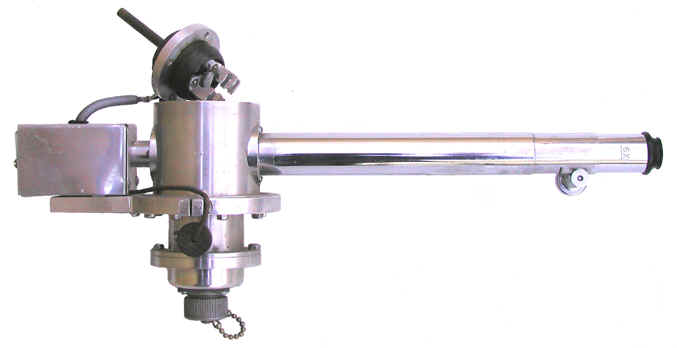
-
Lindemann-Ryerson Electrometer Lindemann-Ryerson Electrometer
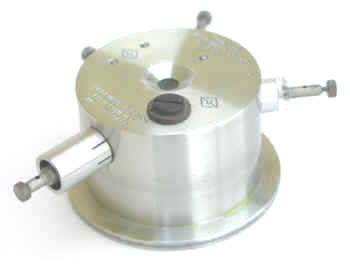
-
Victor Hess's Lindemann Electrometer Victor Hess's Lindemann Electrometer
